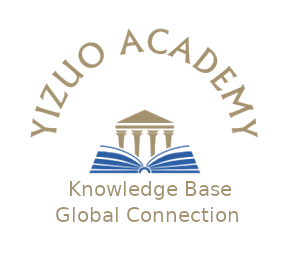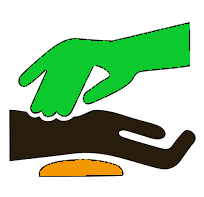
韩医学(韓語:한의학),又称东医(韓語:동의),朝鲜民主主义人民共和国称为高丽医学[1],是朝鲜半岛的传统医学,主要是在傳統中醫的體系上结合朝鲜本土医药發展起來[2][3][4]。中国境内的朝鲜族自治区域称为朝医。朝医是中国五大少数民族医学之一[註 2]。
朝鲜半岛本土传统医学最初称为“乡药”[6]:5-6。朝鲜王朝中期,朝鲜医学家许浚将《黄帝内经》和金元四大家的中医理论与本国传统乡药統合开创“东医”[6]:95。朝鲜王朝末期,医学家李济馬创立以四象为纲的“四象医学”成为韩医学的重要组成部分[7]。韩医以“天、人、性、命”整体观和“四维之四象”结构为理论指导,在临床上施行辨象施治[2]。韩医与中医有许多共通之处,但韩医发展了其独具特色的治疗方法,融合了除中医以外的其它医学知识[2]。在临床方面,韩医非常注重针药并用的治法[7],應診甚少使用脈診[8]。
1986年,韩国将日本式的“汉医”一词改称“韩医”。2006年,韩国为配合2013年东医名著《东医宝鉴》问世400周年的纪念活动申请将此书登录为世界记忆遗产名录。此后,《广州日报》在头版上援引民俗专家白庚胜的话以《韩国拟将中医改为韩医申报“世遗”》为题进行报道,引起舆论对韩医的关注和不满。韩国被指欲割断韩医与中医的源出关系,以突出其医学的本国化[9]。不过也有舆论表示《广州日报》的报道存在“常识性错误”,并支持包括韩医、中医在内的传统医学都成为文化遗产[10]。
Traditional Korean medicine[n 1] (known in North Korea as Koryo medicine) refers to the forms of traditional medicine practiced in Korea.
Korean medicine traditions originated in ancient and prehistoric times and can be traced back as far as 3000 B.C. when stone and bone needles were found in North Hamgyong Province, in present-day North Korea. Korean medicine originated from China. [1][2] In Gojoseon, where the founding myth of Korea is recorded, there is a story of a tiger and a bear who wanted to reincarnate in human form and who ate wormwood and garlic. In Jewang Ungi (제왕운기), which was written around the time of Samguk Yusa, wormwood and garlic are described as 'edible medicine', showing that, even in times when incantatory medicine was the mainstream, medicinal herbs were given as curatives in Korea. Medicinal herbs at this time were used as remedial treatment such as easing the pain or tending injury, along with knowing what foods were good for health.
In the period of the Three Kingdoms, traditional Korean medicine was mainly influenced by other traditional medicines such as ancient Chinese medicine. In the Goryeo dynasty, a more intense investigation of domestic herbs took place: The result was the publication of numerous books on domestic herbs. Medical theories at this time were based on the medicine of Song dynasty, but prescriptions were based on the medicine of the Unified Silla period such as the medical text First Aid Prescriptions Using Native Ingredients or Hyangyak Gugeupbang (향약구급방), which was published in 1236. Other medical journals were published during this period like Introductory Guide to Medicine for the General Public or Jejungiphyobang (제중입효방).
Medicine flourished in the period of the Joseon. For example, the first training system of nurses was instituted under King Taejong (1400-1418), while under the reign of King Sejong the Great (1418-1450) measures were adopted to promote the development of a variety of Korean medicinal ingredients.[3] These efforts were systematized and published in the Hyangyak Jipseongbang (향약집성방, 1433), which was completed and included 703 Korean native medicines, providing an impetus to break away from dependence on Chinese medicine.[4] The medical encyclopaedia named Classified Collection of Medical Prescriptions (醫方類聚, 의방유취), which included many classics from traditional chinese medicine, written by Kim Ye-mong (金禮蒙, 김예몽) and other Korean official doctors from 1443 to 1445, was regarded as one of the greatest medical texts of the 15th century.[4] It included more than 50,000 prescriptions and incorporated 153 different Korean and Chinese texts,[4] including the Concise Prescriptions of Royal Doctors (御醫撮要方, 어의촬요방) which was written by Choi Chong-jun (崔宗峻, 최종준) in 1226. Classified Collection of Medical Prescriptions has very important research value, because it keeps the contents of many ancient Korean and Chinese medical books that had been lost for a long time.[5]
After this, many books on medical specialties were published. There are three physicians from the Joseon Dynasty (1392-1910) who are generally credited with further development of traditional Korean medicine—Heo Jun, Saam, and Lee Je-ma. After the Japanese invasion in 1592, Dongeui Bogam (동의보감) was written by Heo Jun, the first of the major physicians. This work further integrated the Korean and Chinese medicine of its time and was influential to Chinese, Japanese and Vietnamese medicine.
The next major influence to traditional Korean medicine is related to Sasang typology (사상의학). Lee Je-ma and his book, The Principal of Life Preservation in Oriental Medicine (東醫壽世保元, 동의수세보원) systematically theorized with the influence of Korean Confucianism and his clinical experiences in Korea. Lee Je-ma said that even if patients suffer the same illness, patients need to use different herbal applications to treat the same illness due to the pathophysiologies of individuals. He stresses that the health of human body had a close relationship with the state of mind. He believed that the human mind and body were not separate and they closely reflected each other, and the aspect of mind needed to be considered when examining the causes of disease. Thus, not only food and natural environment but also emotional changes in humans can be another major reason for illness. He believed that medical diagnosis and treatment should be based on person's typology rather than on symptoms alone and each person should be given different prescriptions depending on the constitution of the individual.[6] Sasang typology (사상의학) focuses on the individual patients based on different reactions to disease and herbs. Treat illness by the treatment of the root cause through proper diagnosis. Key to this diagnosis is to first determine the internal organs or pathophysiology of each patient.[7]
The next recognized individual is Saam, a priest-physician who is believed to have lived during the 16th century. Although there is much unknown about Saam, including his real name and date of birth, it is recorded that he studied under the famous monk Samyang. He developed a system of acupuncture that employs the five element theory.
In the late Joseon dynasty, positivism was widespread. Clinical evidence was used more commonly as the basis for studying disease and developing cures. Scholars who had turned away from politics devoted themselves to treating diseases and, in consequence, new schools of traditional medicine were established. Simple books on medicine for the common people were published.






